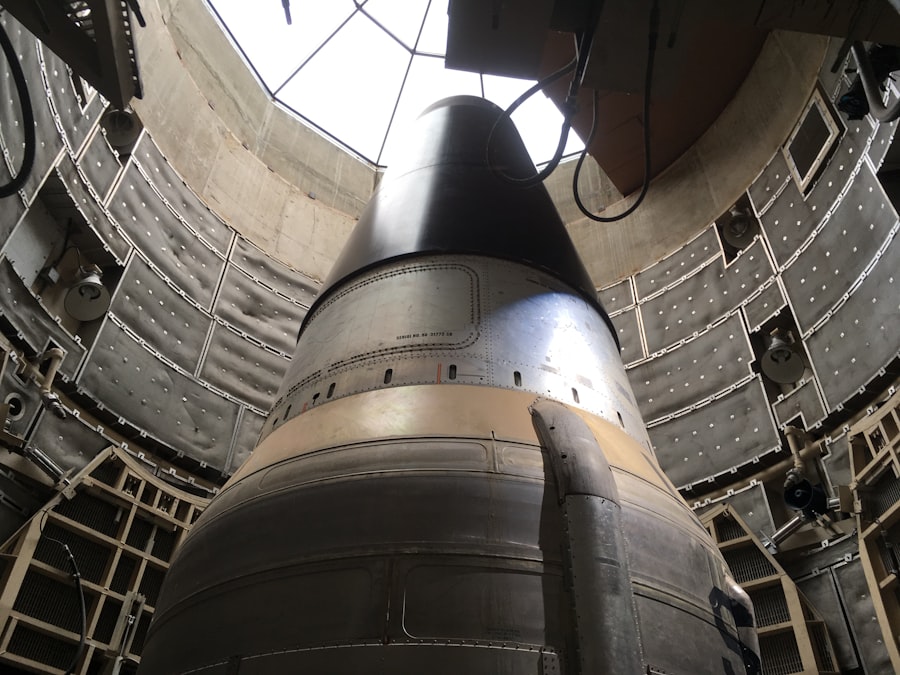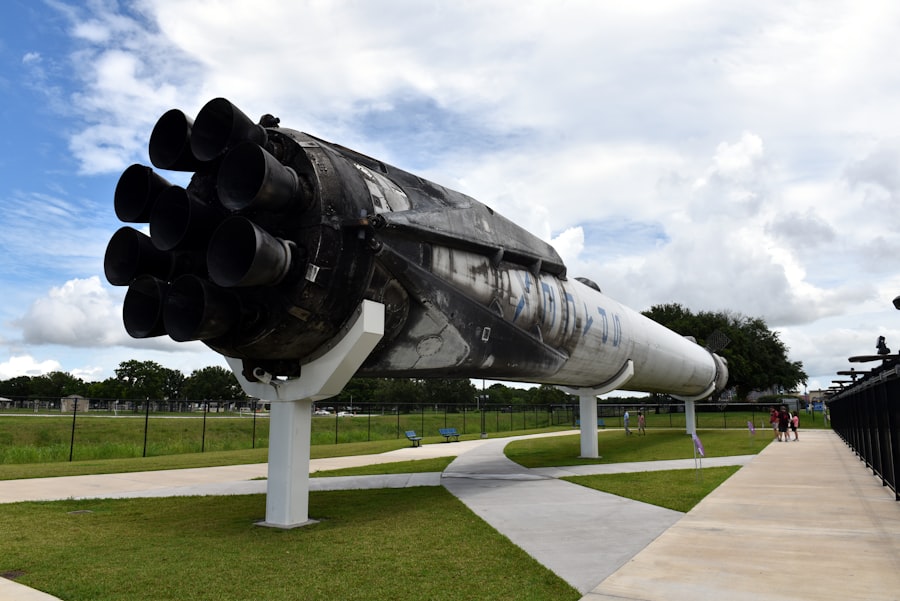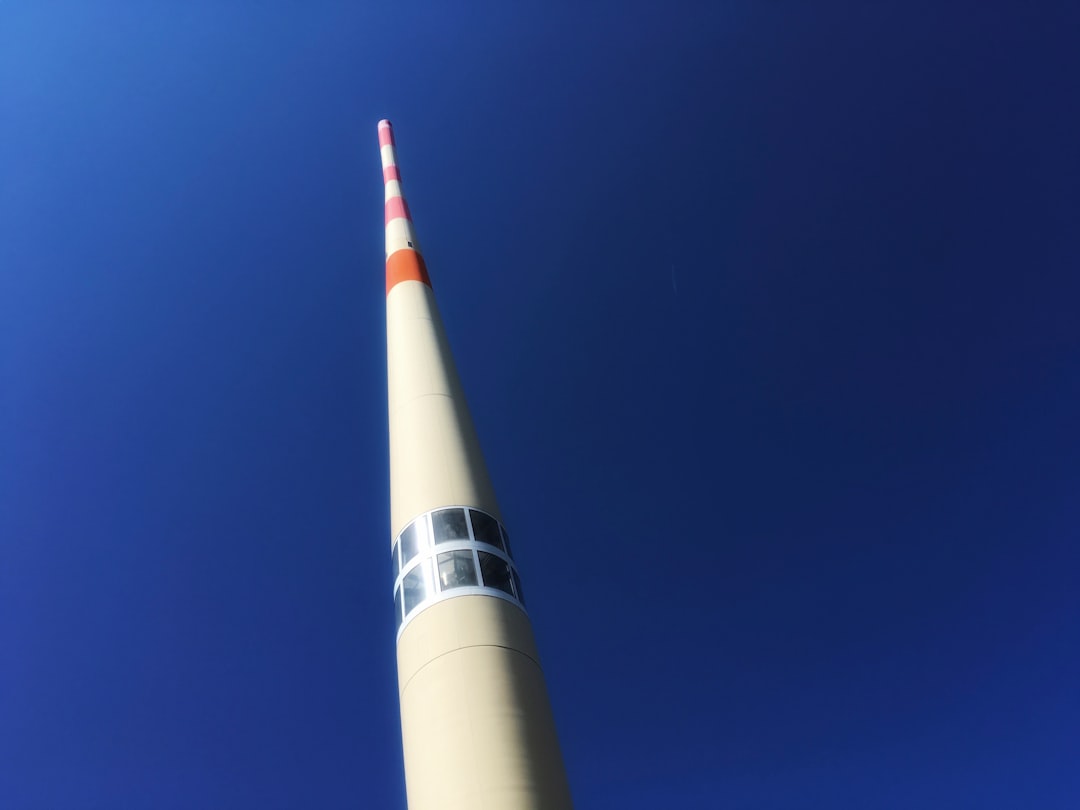The Cold War, a period of geopolitical tension between the Soviet Union and the United States, spanned from the end of World War II until the early 1990s. This era was characterized by a fierce competition not only in military might but also in technological advancements, particularly in space exploration. The Space Race emerged as a significant aspect of this rivalry, with both superpowers striving to demonstrate their superiority through achievements in space.
The launch of Sputnik by the Soviet Union in 1957 marked a pivotal moment, igniting a sense of urgency within the United States to catch up. This event not only showcased the technological prowess of the Soviets but also instilled fear in the American public regarding potential military applications of space technology. As the Space Race progressed, it became evident that advancements in space exploration were closely tied to military capabilities.
The development of intercontinental ballistic missiles (ICBMs) and satellite technology was driven by the need for national security and strategic advantage. Both nations invested heavily in research and development, leading to significant breakthroughs in rocketry and satellite communications. The competition extended beyond mere scientific achievement; it was a demonstration of ideological superiority, with each side eager to prove that their political system could foster innovation and progress.
This intense rivalry laid the groundwork for future developments in space, including the controversial intersection of nuclear weapons and space technology.
Key Takeaways
- The Cold War and the Space Race led to a competition between the United States and the Soviet Union to achieve space superiority.
- Early attempts at launching nuclear weapons into space were made by both superpowers, leading to concerns about the militarization of space.
- The development of nuclear-armed satellites raised fears of a potential arms race in space and the escalation of global tensions.
- The Outer Space Treaty, signed in 1967, prohibited the placement of nuclear weapons in space, contributing to the prevention of an arms race beyond Earth.
- The testing of nuclear weapons in space during the Cold War raised serious ethical and environmental concerns, highlighting the potential dangers of nuclear weapons in space.
Early attempts at launching nuclear weapons into space
In the early years of the Cold War, both the United States and the Soviet Union recognized the potential advantages of deploying nuclear weapons in space. The idea was not merely theoretical; it was rooted in the desire to gain a strategic edge over the opponent. Initial attempts to launch nuclear weapons into space were fraught with challenges, both technical and ethical.
The concept of placing nuclear warheads in orbit raised significant concerns about the implications for global security and stability. Nevertheless, military planners on both sides explored various methods to achieve this goal, driven by the belief that controlling space would be crucial for future warfare. The United States conducted several experiments aimed at understanding the feasibility of launching nuclear weapons into space.
Projects like Operation Argus in 1958 involved detonating nuclear devices at high altitudes to study their effects on the Earth’s atmosphere and electromagnetic environment. These tests were not without controversy, as they raised questions about the environmental impact and the potential for escalation in an already tense geopolitical climate. The Soviet Union, too, engaged in similar experiments, seeking to develop its own capabilities for deploying nuclear weapons beyond Earth’s atmosphere.
These early efforts laid the groundwork for more sophisticated technologies that would emerge in subsequent decades.
The development of nuclear-armed satellites

As the Cold War progressed, both superpowers began to explore the concept of nuclear-armed satellites as a means of deterrence and strategic advantage. The idea was to place nuclear warheads in orbit, allowing for rapid response capabilities and enhanced surveillance of enemy activities. The development of these satellites represented a significant leap in military technology, merging space exploration with nuclear strategy.
The United States initiated programs like the “Nuclear Deterrent Satellite” project, which aimed to create a system capable of delivering nuclear payloads from space. The Soviet Union also pursued similar initiatives, leading to a race to develop advanced satellite systems equipped with nuclear capabilities. These developments raised profound questions about the implications for global security.
The potential for miscalculation or accidental launches increased significantly as both nations sought to establish dominance in this new frontier. The deployment of nuclear-armed satellites not only heightened tensions but also underscored the need for international agreements to regulate activities in space and prevent an arms race that could extend beyond Earth.
The Outer Space Treaty and its impact on nuclear weapons in space
| Aspect | Details |
|---|---|
| Treaty Name | The Outer Space Treaty |
| Year of Adoption | 1967 |
| Key Provisions | – Prohibition of placing nuclear weapons in space – Prohibition of establishing military bases, installations, and fortifications on celestial bodies – Peaceful use of outer space – International cooperation in space exploration |
| Impact on Nuclear Weapons | The treaty has contributed to the prevention of the placement of nuclear weapons in space and has promoted the peaceful use of outer space for the benefit of all countries. |
In response to the escalating tensions surrounding nuclear weapons in space, the international community sought to establish frameworks for regulating activities beyond Earth’s atmosphere. The Outer Space Treaty, signed in 1967, emerged as a landmark agreement aimed at promoting peaceful exploration and preventing the militarization of space. One of its key provisions explicitly prohibited the placement of nuclear weapons or other weapons of mass destruction in orbit or on celestial bodies.
This treaty represented a significant step toward mitigating the risks associated with nuclear arms in space. The impact of the Outer Space Treaty was profound, as it set a precedent for international cooperation in space exploration while simultaneously addressing concerns about security and militarization. By establishing norms against the deployment of nuclear weapons in space, the treaty aimed to foster an environment conducive to peaceful scientific endeavors.
However, despite its intentions, challenges remained regarding compliance and enforcement. Nations continued to develop advanced military technologies, raising questions about whether existing agreements were sufficient to address emerging threats in an evolving geopolitical landscape.
The testing of nuclear weapons in space
Despite international efforts to regulate nuclear activities in space, there were instances where nations conducted tests that defied these agreements. The testing of nuclear weapons in space became a contentious issue during the Cold War, as both superpowers sought to demonstrate their capabilities while pushing the boundaries of existing treaties. Notably, the United States conducted a series of high-altitude nuclear tests known as Operation Fishbowl during the early 1960s.
These tests aimed to explore the effects of nuclear detonations on the Earth’s atmosphere and electromagnetic environment. The Soviet Union also engaged in similar activities, conducting tests that raised alarms among other nations regarding potential fallout and environmental consequences. These tests not only highlighted the risks associated with nuclear detonations but also underscored the challenges of enforcing international agreements.
As nations continued to push technological boundaries, concerns grew about the potential for an arms race extending into outer space, prompting calls for renewed dialogue and cooperation among global powers.
The use of nuclear weapons for space exploration

In addition to military applications, there were discussions about utilizing nuclear technology for peaceful purposes in space exploration. Proponents argued that nuclear propulsion systems could significantly enhance spacecraft capabilities, enabling missions to distant planets and beyond. Concepts such as Project Orion envisioned using nuclear explosions to propel spacecraft through space, potentially revolutionizing interplanetary travel.
This approach promised faster travel times and greater payload capacities compared to conventional chemical propulsion systems. However, these ambitious plans faced numerous challenges, including technical feasibility and safety concerns.
While some scientists advocated for further research into nuclear propulsion technologies, others cautioned against potential risks associated with such endeavors.
The potential for nuclear weapons in space warfare
As technological advancements continued to reshape military strategies, discussions about the potential for nuclear weapons in space warfare gained traction. The prospect of engaging adversaries through orbital platforms equipped with nuclear capabilities raised significant concerns about escalation and miscalculation. Military planners began to consider scenarios where conflicts could extend beyond Earth’s atmosphere, leading to fears of a new dimension of warfare that could have catastrophic consequences.
The implications of such developments were profound, as nations grappled with how to respond to emerging threats from adversaries capable of deploying advanced weaponry in space. The potential for a new arms race loomed large, prompting calls for renewed diplomatic efforts to establish norms governing military activities beyond Earth’s atmosphere. As nations sought to secure their interests in this uncharted territory, discussions surrounding arms control and disarmament became increasingly urgent.
International efforts to prevent the deployment of nuclear weapons in space
Recognizing the risks associated with deploying nuclear weapons in space, various international organizations and coalitions have emerged to advocate for disarmament and regulation. Efforts such as the Conference on Disarmament have sought to address concerns related to outer space militarization by promoting dialogue among nations regarding arms control measures. Additionally, non-governmental organizations have played a crucial role in raising awareness about the potential dangers posed by nuclear weapons in space.
These international efforts have led to renewed discussions about establishing comprehensive treaties aimed at preventing an arms race in outer space. While progress has been made through initiatives like the Outer Space Treaty, challenges remain regarding compliance and enforcement mechanisms. As geopolitical tensions persist, fostering cooperation among nations will be essential to ensuring that outer space remains a domain for peaceful exploration rather than a battleground for military conflict.
The future of nuclear weapons in space
Looking ahead, the future of nuclear weapons in space remains uncertain as technological advancements continue to evolve rapidly. Emerging technologies such as hypersonic missiles and advanced satellite systems raise questions about how nations will navigate security challenges in an increasingly complex geopolitical landscape. As countries invest heavily in developing their military capabilities, concerns about potential conflicts extending into outer space are likely to intensify.
The need for robust international frameworks governing activities in outer space will become increasingly critical as nations seek to balance national security interests with global stability. Diplomatic efforts aimed at fostering cooperation among nations will be essential to prevent an arms race that could have dire consequences for humanity as a whole. As discussions surrounding disarmament and regulation continue, finding common ground among competing interests will be vital for shaping a future where outer space is used primarily for peaceful purposes.
Ethical and environmental concerns surrounding nuclear weapons in space
The deployment of nuclear weapons in space raises profound ethical and environmental concerns that cannot be overlooked. The potential consequences of detonating nuclear devices beyond Earth’s atmosphere extend far beyond immediate military objectives; they encompass long-term impacts on celestial bodies and human safety. Environmental advocates warn that even limited testing or deployment could lead to irreversible damage to ecosystems both on Earth and beyond.
Ethically, questions arise regarding humanity’s responsibility toward preserving outer space as a shared resource for future generations. The militarization of this domain threatens not only international peace but also our collective ability to explore and utilize space responsibly. As discussions surrounding these issues continue, it is imperative that policymakers consider not only national security interests but also ethical obligations toward safeguarding our planet and its celestial neighbors.
The role of nuclear weapons in space policy and diplomacy
Nuclear weapons have played a pivotal role in shaping space policy and diplomacy throughout history. As nations navigate complex geopolitical landscapes, discussions surrounding arms control and disarmament remain central to international relations concerning outer space activities. Diplomatic efforts aimed at establishing norms governing military activities beyond Earth’s atmosphere are essential for fostering cooperation among nations while addressing security concerns.
The interplay between national security interests and global stability underscores the importance of dialogue among nations regarding their respective policies on nuclear weapons in space. As technological advancements continue to reshape military strategies, finding common ground will be crucial for preventing an arms race that could extend into outer space. Ultimately, fostering collaboration among nations will be essential for ensuring that outer space remains a domain for peaceful exploration rather than a battleground for military conflict.
In conclusion, while significant strides have been made toward regulating activities related to nuclear weapons in space through international treaties and diplomatic efforts, challenges persist as nations grapple with emerging technologies and evolving security dynamics. As humanity stands on the brink of new frontiers in exploration beyond Earth’s atmosphere, it is imperative that policymakers prioritize cooperation over competition to ensure a future where outer space is utilized responsibly for all humankind.
In the realm of space exploration and defense, the concept of nuclear weapons in space has been a topic of intense debate and concern. The history of this subject is marked by various treaties and international agreements aimed at preventing the militarization of space. An interesting article that delves into the historical context and implications of nuclear weapons in space can be found on the Hey Did You Know This website. For a detailed exploration of this topic, you can read more by visiting this article. This piece provides insights into the technological advancements and geopolitical tensions that have shaped the discourse around nuclear armament in the cosmos.
WATCH THIS! 🤯America Tried to Nuke the Moon
FAQs
What is the history of nuclear weapons in space?
The history of nuclear weapons in space dates back to the Cold War era, when both the United States and the Soviet Union conducted tests and experiments involving nuclear weapons in space.
When were the first nuclear weapons tests conducted in space?
The first nuclear weapons tests in space were conducted by the United States in the early 1960s as part of the Operation Dominic series of tests. The Soviet Union also conducted its own tests during the same time period.
What were the purposes of conducting nuclear weapons tests in space?
The primary purposes of conducting nuclear weapons tests in space were to study the effects of nuclear explosions in the near-vacuum and microgravity conditions of space, as well as to demonstrate military capabilities and deterrence.
What were the major treaties and agreements related to nuclear weapons in space?
The major treaties and agreements related to nuclear weapons in space include the Outer Space Treaty of 1967, which prohibits the placement of nuclear weapons and other weapons of mass destruction in orbit around Earth, on celestial bodies, or in outer space in general.
Have there been any incidents or accidents involving nuclear weapons in space?
There have been a few incidents and accidents involving nuclear weapons in space, including the accidental re-entry of a US satellite with a nuclear reactor on board in 1978, and the failed launch of a Soviet satellite with a nuclear reactor in 1983.
